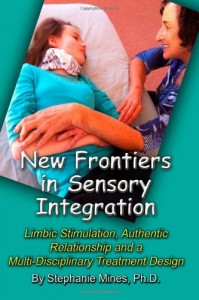PART THREE OF A THREE PART SERIES
Read Part One, Advocating for Childhood, Neurodiversity and Limbic Stimulation Here
Read Part Two, Prematurity, Caesarean Delivery and Sensory Integration, Here
When caregivers attune to children of all ages there is an increase in the healing response. The physiology of the healing response catalyzes immune function and cellular repair. Attuning to children means reading them as you would read a wonderful book that you have fallen in love with and that you are absorbing and understanding, chapter by chapter, orienting always towards what it is really telling you. In order to attune to young people therapists must consider and attune to their families in the same way. When alliances are formed with parents there is an exponential increase in therapeutic benefit.
Healthcare practitioners as well as parents can open developmental windows simply through their attunement to children. Attunement means putting one’s own projections and desires aside. It is a state of openness and presence. Attunement is receptivity. It is imbued with curiosity, a joyful but simultaneously neutral interest that radiates out, putting children at ease. Attunement cannot co-exist with control, projection, manipulation or disinterest. It requires genuine empathy and compassionate presence.
One can attune with one’s eyes, ears, hands, and heart. When you are attuning with all these parts of yourself, you are vibrating at a very high level of consciousness. Attunement is simultaneously altruistic and compassionate. It is the single most important skill necessary to empower and serve children so that they can realize their entelechy or essential self.

The essential components of attunement are:
- Listening
- Eye Contact
- Mirroring
- Presence
- Sensitivity
- Empathy and Compassion
- Respectful, Well Boundaried Contact
- Intention, and
- Non-projection.
Sometimes parents do not have their own history of being attuned to and can therefore be at a loss about offering attunement to their child. Therapists can model for parents how to attune by engaging the parent during therapy and teaching parents how to replicate interventions at home. Repetition and consistency for children with sensory needs leads more swiftly to self-regulation.
Children with sensory needs, especially those who are non-verbal, are a highly vulnerable population. What better protection then to fully involve parents? Sometimes this involvement may mean an agreement with a parent to leave the treatment room at times. An example is my experience with Katrina. Katrina is a bright 15 year-old with a language processing disorder. She had understandably become dependent on always looking at her mother to “fill in the blanks” when she could not find the words she wanted to use with the alacrity of her peers. But at the age of 15 this habit was no longer serving her. We all agreed that Katrina’s mother should stop attending therapy sessions.
We discovered that Katrina could speak for herself. Yes, her processing speed was slow but this meant that Katrina had to learn how to advocate for herself, and she did. In this case attuning to Katrina and her family dynamics meant having faith in this young woman to find her way as well as having faith in her family to change. We took a risk based on the intention to empower Katrina. When this is the central object of therapeutic decision making, you cannot go wrong.
I suspect we have long under-estimated the power of young people with sensory needs to be pro-active for themselves. I can discern how prepared for self-advocacy a child is by giving them self-care assignments. These assignments arise out of my attunement and always have a quality of playfulness so that they are not threatening. All children are kinesthetic and fun-loving no matter what their sensory or learning challenge. I asked 8 year-old Aiden, an autistic boy who was adverse to touch, to hold some areas on his body whenever he felt agitated and out of control. I said this was a scientific experiment to see if these practices worked because Aiden was obsessed with science. He liked being my “research assistant.” It matched his sense of himself as a mature scientist. His mother was skeptical that he would follow through because of his difficulties with touch. She was surprised that Aiden not only was diligent in “the experiment”, he even reminded his mother to try it herself when he noticed that she was upset.
CHILDREN AND TRAUMA

Just as adult nervous systems demonstrate a sympathetic or parasympathetic dominance in response to stress, so do children’s. For children with sensory needs these dominances are seen in hyper or hypo arousal. Children who are tense and hyperactive are exhibiting sympathetic nervous system dominance and need to learn how to calm and self-soothe. Children who are withdrawn and lethargic are revealing parasympathetic dominance and need to be guided towards expression and communication of their needs. Specific developmental sequences have to be considered in evaluating these dominances.
For instance, three years old is when the connecting fibers of the corpus callosum, the part of the brain that links the right and left hemispheres, are growing. Linking right hemisphere functions of self-regulation to the left hemisphere creates the capacity to wind down. If, by the age of three, this linkage has not been built, then parents and care providers need to help stimulate the construction through their loving interventions. Applied touch and cranial interventions can be instrumental in gently evoking this integration. When parents are informed about the relationship between brain development and nervous system dominances, alongside understanding sensory integration, their capacity to attune to their children is heightened. Therapists, I believe, have the responsibility to provide this education and tailor it to the understanding of the family members.
Lily’s experience of being attuned to by her cranial-sacral therapist demonstrates the miraculous power of attunement. Lily was born with severe eye problems that resulted in chronic headaches and learning challenges. She was diagnosed with a visual processing disorder. She was unable to meet her reading milestones and needed tutoring. There was considerable shame for her in this. By the age of thirteen she wore thick glasses, retreated from the busy social scene of blooming adolescence, and frequently isolated herself in her darkened room to rest her eyes from over stimulation.
Lily’s mother discovered an excellent cranial-sacral therapist through another mom’s recommendation. Upon meeting Lily the therapist sensed the young girl’s loneliness, embarrassment and the fear that she was a burden to her family and an outcast. Before treating her, the therapist spoke to Lily and her mom about how emotions influence the body and specifically cranial structures, and how emotional and physical healing goes hand in hand. She used language that both Lily and her mother understood. Lily listened thoughtfully and felt seen for the first time. The cranial therapy was unquestionably helpful, but in addition being seen gave Lily permission to see the world and find safety in it. Over a period of several months her headaches decreased significantly and her vision improved. Safety is a function of memory and is therefore directed by the amygdala, a small almond shaped structure in the limbic brain. When our experience of safety shifts palpably, it makes it possible to step into the present and form a new, over-riding experience of safety.
Somatic practitioners sometimes express concern about the use of dialogue in their practice. They fear crossing over the line into psychotherapy. Certainly all therapeutic contracts must be honored. However, sometimes withholding perceptions can be more harmful than uttering them. When serving neurodiverse young people therapists can confer with parents about their insights to everyone’s benefit. Wholeness must be honored with the same ethics and integrity that we apply to contracts, particularly in the service of young people.

